DEFINITION OF SENSOR NETWORK
|
| A sensor network is a group of specialized transducers with a communications infrastructure intended to monitor and record conditions at diverse locations. Commonly monitored parameters are temperature, humidity, pressure, wind direction and speed, illumination intensity, vibration intensity, sound intensity, power-line voltage, chemical concentrations, pollutant levels and vital body functions. A sensor network consists of multiple detection stations called sensor nodes, each of which is small, lightweight and portable. Every sensor node is equipped with transducer, transceiver and power source. |
SYSTEM ARCHITECTURE
|
| In a common WSN architecture, the measurement nodes are deployed to acquire measurements such as temperature, voltage, or even dissolved oxygen. The nodes are part of a wireless network administered by the gateway, which governs network aspects such as client authentication and data security. The gateway collects the measurement data from each node and sends it over a wired connection, typically Ethernet, to a host controller. There, software such as the NI Lab VIEW graphical development environment can perform advanced processing and analysis and present your data in a fashion that meets your needs. |
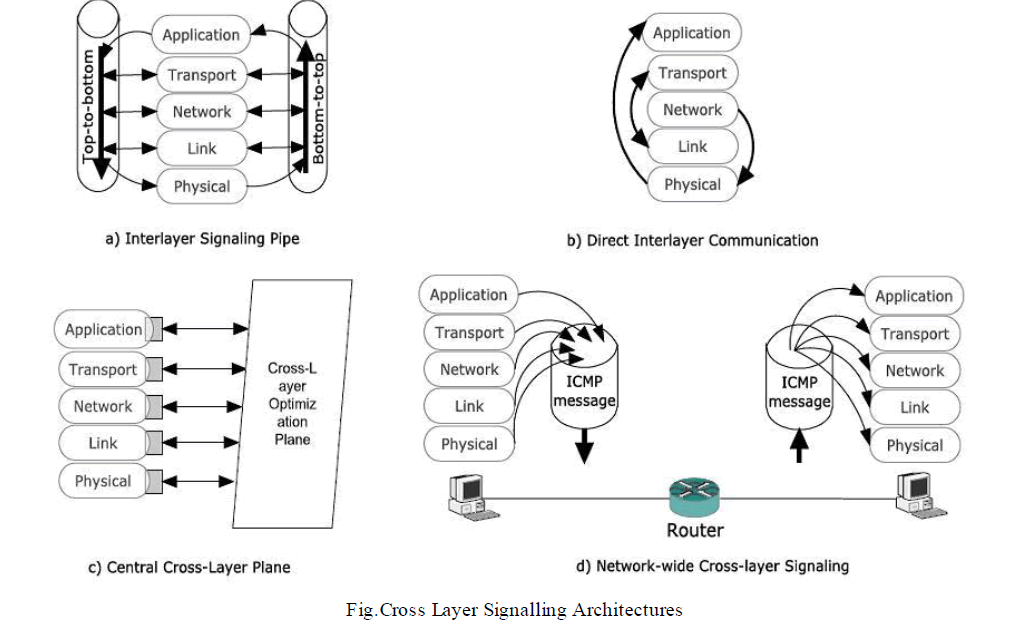 |
| generates electrical signals based on sensed physical effects and phenomena. The microcomputer processes and stores the sensor output. The transceiver, which can be hard-wired or wireless, receives commands from a central computer and transmits data to that computer. The power for each sensor node is derived from the electric utility or from a battery. Potential applications of sensor networks include: |
| • Industrial automation |
| • Automated and smart homes |
| • Video surveillance |
| • Traffic monitoring |
| • Medical device monitoring |
| • Monitoring of weather conditions |
| • Air traffic control |
| • Robot control |
WIRELESS SENSOR NETWORK (WSN)
|
| WSN Consists of spatially distributed autonomous sensors to monitor physical or environmental conditions, such as temperature, sound, vibration, pressure, motion or pollutants and to cooperatively pass their data through the network to a main location. The more modern networks are bi-directional, also enabling control of sensor activity. The development of wireless sensor networks was motivated by military applications such as battlefield surveillance; today such networks are used in many industrial and consumer applications, such as industrial process monitoring and control, machine health monitoring, and so on. The WSN is built of "nodes" – from a few to several hundreds or even thousands, where each node is connected to one (or sometimes several) sensors. Each such sensor network node has typically several parts: a radio transceiver with an internal antenna or connection to an external antenna, a microcontroller, an electronic circuit for interfacing with the sensors and an energy source, usually a battery or an embedded form of energy harvesting. A sensor node might vary in size from that of a shoebox down to the size of a grain of dust, although functioning "motes" of genuine microscopic dimensions have yet to be created. The cost of sensor nodes is similarly variable, ranging from a few to hundreds of dollars, depending on the complexity of the individual sensor nodes. Size and cost constraints on sensor nodes result in corresponding constraints on resources such as energy, memory, computational speed and communications bandwidth. The topology of the WSNs can vary from a simple star network to an advanced multi-hop wireless mesh network. The propagation technique between the hops of the network can be routing or flooding. In computer science and telecommunications, wireless sensor networks are an active research area with numerous workshops and conferences arranged each year. |
| A wireless sensor network (WSN) is a wireless network consisting of spatially distributed autonomous devices that use sensors to monitor physical or environmental conditions. These autonomous devices, or nodes, combine with routers and a gateway to create a typical WSN system. The distributed measurement nodes communicate wirelessly to a central gateway, which provides a connection to the wired world where you can collect, process, analyze, and present your measurement data. To extend distance and reliability in a wireless sensor network, you can use routers to gain an additional communication link between end nodes and the gateway. |
| National Instruments Wireless Sensor Networks offer reliable, low-power measurement nodes that operate for up to three years on 4 AA batteries and can be deployed for long-term, remote operation. The NI WSN protocol based on IEEE 802.15.4 and ZigBee technology provides a low-power communication standard that offers mesh routing capabilities to extend network distance and reliability. The wireless protocol you select for your network depends on your application requirements. To learn more about other wireless technologies for your application, read the “Selecting the Right Wireless Technology” white paper. |
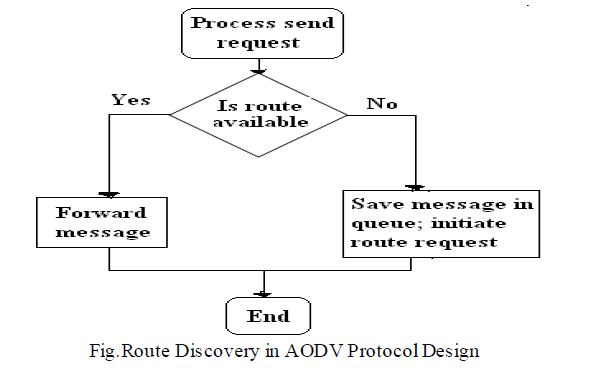 |
AREA MONITORING
|
| Area monitoring is a common application of WSNs. In area monitoring, the WSN is deployed over a region where some phenomenon is to be monitored. A military example is the use of sensors to detect enemy intrusion; a civilian example is the geo-fencing of gas or oil pipelines. When the sensors detect the event being monitored (heat, pressure), the event is reported to one of the base stations, which then takes appropriate action (e.g., send a message on the internet or to a satellite). Similarly, wireless sensor networks can use a range of sensors to detect the presence of vehicles ranging from motorcycles to train cars. |
NETWORK TOPOLOGY
|
| You can use several network topologies to coordinate the WSN gateway, end nodes, and router nodes. Router nodes are similar to end nodes in that they can acquire measurement data, but you also can use them to pass along measurement data from other nodes. The first, and most basic, is the star topology, in which each node maintains a single, direct communication path with the gateway. This topology is simple but restricts the overall distance that your network can achieve. To increase the distance a network can cover, you can implement a cluster, or tree, topology. In this more complex architecture, each node still maintains a single communication path to the gateway but can use other nodes to route its data along that path. This topology suffers from a problem, however. If a router node goes down, all the nodes that depend on that router node also lose their communication paths to the gateway. The mesh network topology remedies this issue by using redundant communication paths to increase system reliability. In a mesh network, nodes maintain multiple communication paths back to the gateway, so that if one router node goes down, the network automatically reroutes the data through a different path. |
| The mesh topology, while very reliable, does suffer from an increase in network latency because data must make multiple hops before arriving at the gateway. |
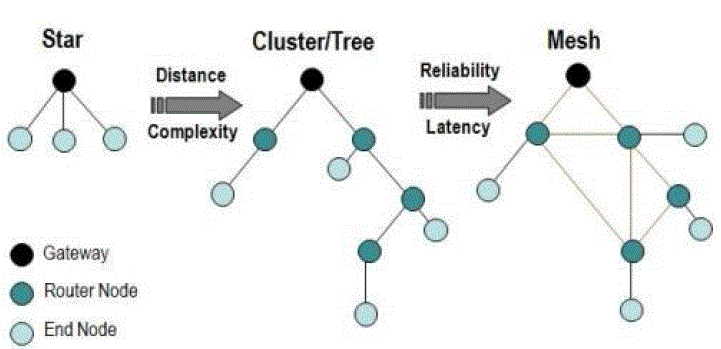 |
ENVIRONMENTAL SENSING
|
| The term Environmental Sensor Networks has evolved to cover many applications of WSNs to earth science research. This includes sensing volcanoes, oceans, glaciers, forests, etc. Some other major areas are listed below. |
| A) Air pollution monitoring |
| Wireless sensor networks have been deployed in several cities (Stockholm, London or Brisbane) to monitor the concentration of dangerous gases for citizens. These can take advantage of the ad-hoc wireless links rather than wired installations, which also make them more mobile for testing readings in different areas. There are various architectures that can be used for such applications as well as different kinds of data analysis and data mining that can be conducted. |
| B) Forest fires detection |
| A network of Sensor Nodes can be installed in a forest to detect when a fire has started. The nodes can be equipped with sensors to measure temperature, humidity and gases which are produced by fires in the trees or vegetation. The early detection is crucial for a successful action of the firefighters; thanks to Wireless Sensor Networks, the fire brigade will be able to know when a fire is started and how it is spreading. |
| C) Greenhouse monitoring |
| Wireless sensor networks are also used to control the temperature and humidity levels inside commercial greenhouses. When the temperature and humidity drops below specific levels, the greenhouse manager must be notified via e-mail or cell phone text message, or host systems can trigger misting systems, open vents, turn on fans, or control a wide variety of system responses. |
| D) Landslide detection |
| A landslide detection system, makes use of a wireless sensor network to detect the slight movements of soil and changes in various parameters that may occur before or during a landslide. And through the data gathered it may be possible to know the occurrence of landslides long before it actually happens. |
| E) Machine health monitoring |
| Wireless sensor networks have been developed for machinery condition-based maintenance (CBM)as they offer significant cost savings and enable new functionalities. In wired systems, the installation of enough sensors is often limited by the cost of wiring. Previously inaccessible locations, rotating machinery, hazardous or restricted areas, and mobile assets can now be reached with wireless sensors. |
| F) Data Logging |
| Wireless sensor networks are also used for the collection of data for monitoring of environmental information, this can be as simple as the monitoring of the temperature in a fridge to the level of water in overflow tanks in nuclear power plants. The statistical information can then be used to show how system have been working. |
| G Water/wastewater monitoring |
| There are many opportunities for using wireless sensor networks within the water/wastewater industries. Facilities not wired for power or data transmission can be monitored using industrial wireless I/O devices and sensors powered using solar panels or battery packs and also used in pollution control board. |
| H) Agriculture |
| Using wireless sensor networks within the agricultural industry is increasingly common; using a wireless network frees the farmer from the maintenance of wiring in a difficult environment. Gravity feed water systems can be monitored using pressure transmitters to monitor water tank levels, pumps can be controlled using wireless I/O devices and water use can be measured and wirelessly transmitted back to a central control centre for billing. Irrigation automation enables more efficient water use and reduces waste. |
| I) Structural monitoring |
| Wireless sensors can be used to monitor the movement within buildings and infrastructure such as bridges, flyovers, embankments, tunnels etc... enabling Engineering practices to monitor assets remotely with out the need for costly site visits, as well as having the advantage of daily data, whereas traditionally this data was collected weekly or monthly, using physical site visits, involving either road or rail closure in some cases. It is also far more accurate than any visual inspection that would be carried out. |
CHARACTERISTICS
|
| The main characteristics of a WSN include |
| ? Power consumption constrains for nodes using batteries or energy harvesting |
| ? Ability to cope with node failures |
| ? Mobility of nodes |
| ? Dynamic network topology |
| ? Communication failures |
| ? Heterogeneity of nodes |
| ? Scalability to large scale of deployment |
| ? Ability to withstand harsh environmental conditions |
| ? Ease of use |
| ? Unattended operation |
| ? Power consumption |
| Sensor nodes can be imagined as small computers, extremely basic in terms of their interfaces and their components. They usually consist of a processing unit with limited computational power and limited memory, sensors or MEMS (including specific conditioning circuitry), a communication device (usually radio transceivers or alternatively optical), and a power source usually in the form of a battery. Other possible inclusions are energy harvesting modules, secondary ASICs, and possibly secondary communication devices (e.g. RS-232 or USB). |
| The base stations are one or more components of the WSN with much more computational, energy and communication resources. They act as a gateway between sensor nodes and the end user as they typically forward data from the WSN on to a server. Other special components in routing based networks are routers, designed to compute, calculate and distribute the routing tables. Many techniques are used to connect to the outside world including mobile phone networks, satellite phones, radio modems, long-range Wi-Fi links etc. Many base stations are ARM-based running a form ofEmbedded Linux. Platforms. |
STANDARDS AND SPECIFICATIONS
|
| Several standards are currently either ratified or under development for wireless sensor networks. There are a number of standardization bodies in the field of WSNs. The IEEE focuses on the physical land MAC layers; the Internet Engineering Task Force works on layers 3 and above. In addition to these, bodies such as the International Society of Automation provide vertical solutions, covering all protocol layer. Finally, there are also several non-standard, proprietary mechanisms and specifications. Standards are used far less in WSNs than in other computing systems which makes most systems incapable of direct communication between different systems. |
INFORMATION FUSION
|
| In wireless sensor networks, information fusion, also called data fusionl data in a central base station. has been developed for processing sensor data by filtering, aggregating, and making inferences about the gathered data. Information fusion deals with the combination of multiple sources to obtain improved information: cheaper, greater quality or greater relevance. Within the wireless sensor networks domain, simple aggregation techniques such as maximum, minimum, and average, have been developed for reducing the overall data traffic to save energy. Sensor Networks to Monitor Marine Environment with Particular Focus on Climate Changes |
INTERFACING SENSOR NETWORK
|
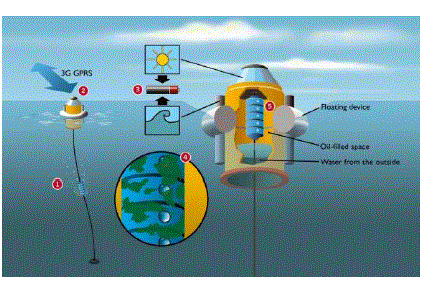 |
| In a nutshell, this blog describes a way to interface twitter and wordpress using sensor networks using two products called Waspmote and meshlium from libelium htechnologies. The actual mechansim is a bit cryptic so I have tried to make this blog more complete by adding a bit more about the two products and how they interact in case of forest fire detection and that helps understand the twitter/facebook sensor application better. Waspmote is a modular platform for wireless sensor network which connects to a number of sensor boards. Meshlium is a multiprotocol mesh router which combines Wifi, ZigBee, GPRS, Bluetooth and GPS technologies. Together, the architecture can be used to form an ad hoc sensor network. For example: In the case of detecting forest fires using wireless sensor networks using waspmote . In this configuration, the sensors connected to Waspmote gather information in ZigBee wireless network which connects by WiFi to the control panel. 90 Waspmotes were deployed in strategic locations; 4 parameters (Temperature, Relative humidity, Carbon monoxide (CO) and Carbon Dioxide (CO2) were measured each at 5 minute intervals. |
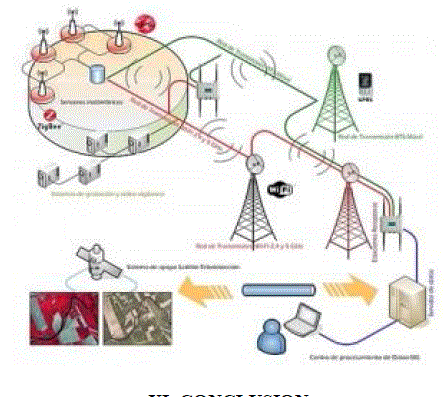 |
CONCLUSION
|
| In this articles I have described about sensor networks and their various applications used in different fields. And also I have plotted some of the architecture about sensor, and network sensor. |
References
|
- V. Raghunathan, S. Ganeriwal, and M. Srivastava, "Emerging techniques for long lived wireless sensor networks,"IEEE Communications Magazine, pp. 108-114, 2006.
- D. Puccinelli and M. Haenggi, "Wireless sensor networks: applications and challenges of ubiquitous sensing," IEEECircuits and Systems Magazine, pp. 19-31, 2005.
- F. Akyildiz, W. Su, Y. Sankarasubramaniam, and E. Cayirci, "A survey on sensor networks," IEEE CommunicationsMagazine, pp. 102-114,2002.
- "Zigbee specification version 1.0," tech. rep. available at "http://www.zigbee.org".
- IEEE Working Group 802.15.4, "IEEE Std 802.15.4 -2003, Part 15.4: Wireless Medium Access Control (MAC) and
- Physical Layer (PHY) Specifications for Low-Rate Wireless Personal Area Networks (LRWPANs)," tech. rep., 2003.
- Oppermann, L. Stoica, A. Rabbachin, Z. Shelby, and J. Haapola, "Uwb wireless sensor networks: Uwen - a practicalexample," IEEE Communications Magazine, pp. S27-S32, 2004.
- F. Molisch, et.al, "UWB PHY proposal for IEEE 802.15.4a Alt-PHY Project," tech. rep., 2005. doc.: IEEE 802.15-05-0172-02-004a.
- IEEE Working Group 802.15.4a, "Draft specifications for IEEE 802.15.4a standard", 2006, atwww.802wirelessworld.com
- Federal Communications Commission, "First report and order 02-48,"2002.
- M. K. Simon, J. K. Omura, R. A. Scholtz, and B. K. Levitt, Spread Spectrum Communications Handbook. McGraw-Hill,Inc., 1994.
- J. Viterbi, CDMA: Principles of Spread Spectrum Communications. New York: Addison-Wesley, 1995.
- J. McCorkle et al., "Xtreme spectrum cpf document," 2003. Document IEEE 802.15-03/154rO.
- ECMA, "Uwb: High rate ultra wideband phy and mac standard," tech. rep., 2005. www.ecma-international.org.
- R. A. Scholtz, "Multiple access with time-hopping impulse modulation," in Proc. IEEE Military Commun. Conf(MILCOM), vol. 2, pp. 447-450, Oct 1993. Boston, MA, USA.
- M. Z. Win and R. A. Scholtz, "Impulse radio: How it works," IEEE Commun. Lett., vol. 2, pp. 36-38, Feb 1998.
- M. Z. Win and R. A. Scholtz, "Ultra-wide bandwidth time-hopping spread-spectrum impulse radio for wirelessmultiple -access communications," IEEE Trans. Commun., vol. 48, pp. 679-691, Apr 2000.
- F. Molisch, "Ultrawideband propagation channels - theory, measurement, and modeling," IEEE Trans. Veh. Techn.,vol. 54, pp. 1528 - 1545, Sept 2005.
- M. Z. Win and R. A. Scholtz, "On the energy capture of ultra -wide bandwidth signals in dense multipathenvironments," IEEE Commun. Lett., vol. 2, pp. 245-247, Sept 1998.
- J. Karedal, S. Wyne, P. Almers, F. Tufvesson, and A. F. Molisch, "Statistical analysis of the uwb channel in anindustrial environment," in Proc. IEEE Veh. Tech. Conf (VTC-Fall), vol. 1, pp. 81-85, Sept. 2004. Los Angeles, CA, USA.
- F. Molisch, K. Balakrishnan, C. C. Chong, D. Cassioli, S. Emami, A. Fort, J. Karedal, J. Kunisch, H. Schantz, , andK. Siwiak, "A comprehensive model for ultrawideband propagation channels," IEEE Trans. Antennas Prop., p. submitted,2006.
- D. Cassioli, M. Z. Win, A. F. Molisch, and F. Vatelaro, "Performance of selective Rake reception in a realistic UWBchannel," in Proc. ICC 2002, pp. 763-767, 2002.
- F. Chin, et. al., "Impulse radio signaling for communication and ranging," tech. rep. IEEE P802.15-05-0231-03-004a,available at http:H802wirelessworld.com.
- Lakkis, "Pulse compression," tech. rep. IEEE P802.15-05-0456-02- 004a, available at http:H802wirelessworld.com.
- R. Hoctor and H. Tomlinson, "Delay-hopped transmitted reference rf communications," in IEEE conf on UltraWideband Systems and Technologies 2002, pp. 265-270, 2002.
|